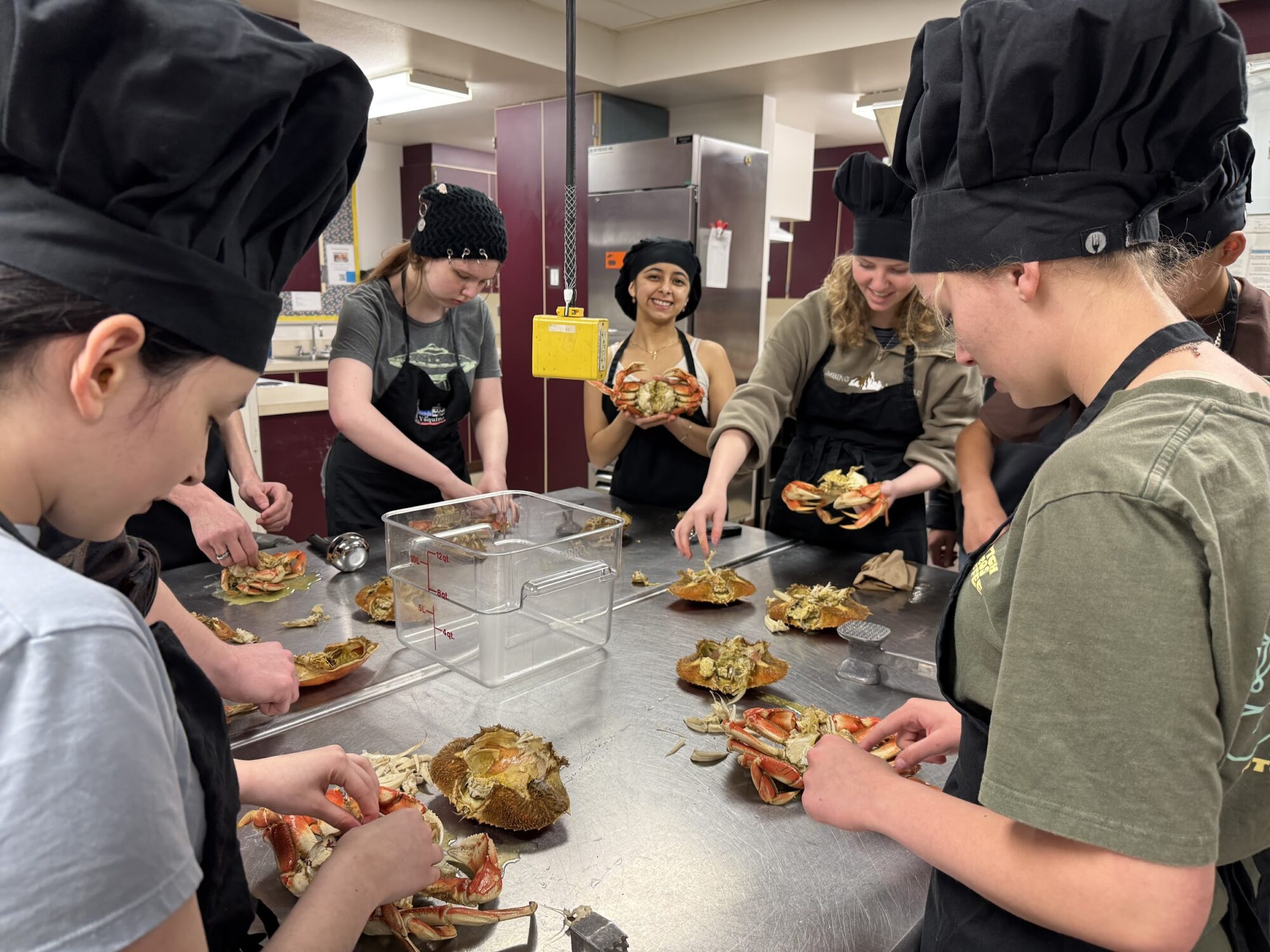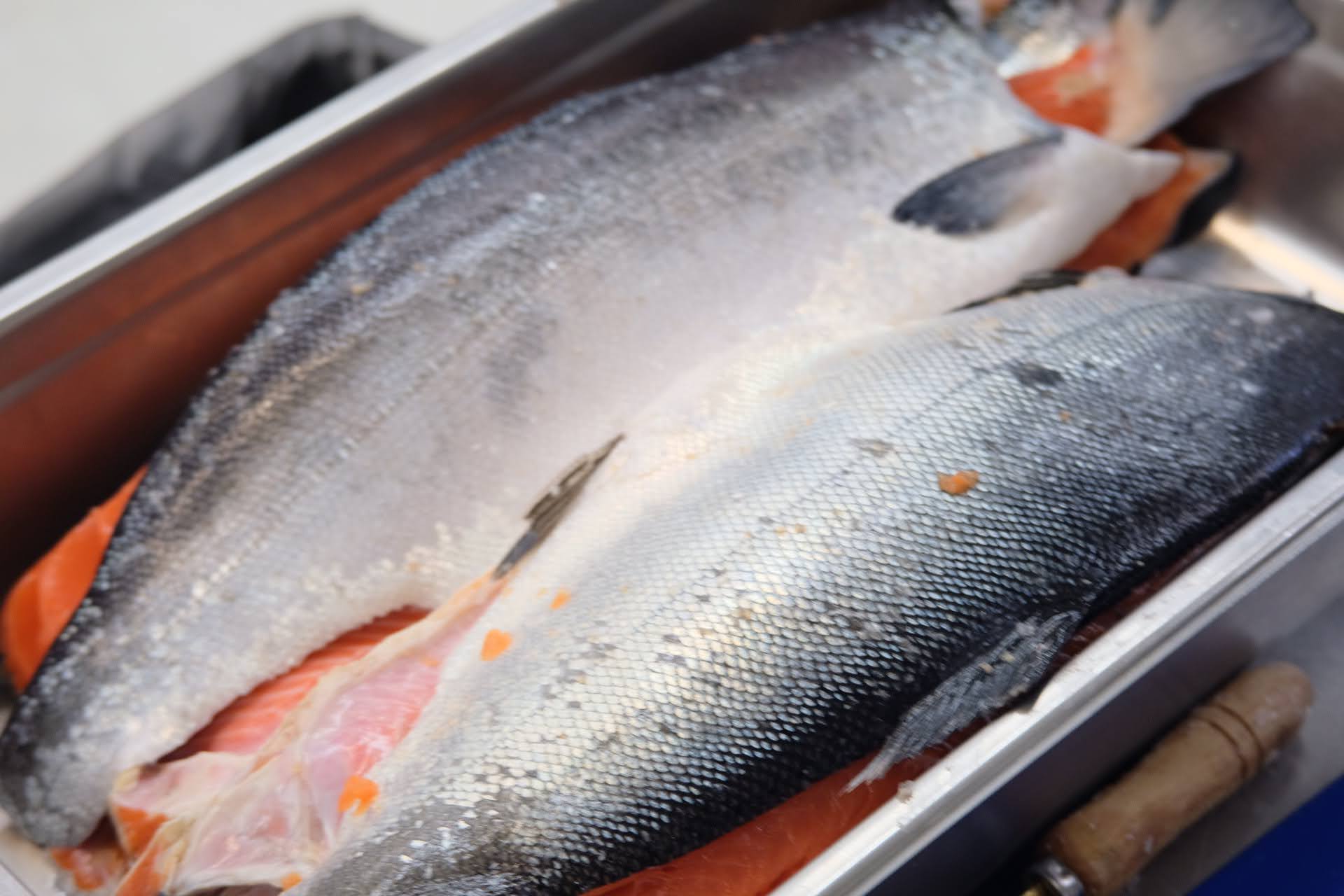Meet the Oregon Coast Partners Getting Seafood into Schools
Last year, Oregon Seafare and Oregon Coast Visitors Association launched the High School Seafood Butchery Program as a pilot project with a mission to get fresh Oregon seafood into classrooms while building the workforce of the future.
This year, that vision graduated.



With the support of new and old partners, the Seafood Butchery Program scaled from 5 to 9 schools, extending across 5 of Oregon’s 7 coastal counties. What started as a pilot is now a working system—with seafood being stored, distributed, slacked, and delivered through a community-powered network of fishers, processors, hubs, and educators.
“This year was such a different iteration than last year,” shared Program Director Maggie Michaels. “Last year, it was me with five coolers in my car making deliveries to classrooms. This year, thanks to a huge donation from Oregon Trawl, it got bigger. More partners were involved, and we set up distribution patterns to serve nine schools. I never could have managed that alone.”
None of this would have been possible without the local businesses and individuals who went above and beyond to make it happen. Some donated freezer space. Others delivered fish for free. Many restructured operations, absorbed costs, or stepped up with last-minute solutions, all to make sure high school students could learn with fresh, local product.



A Snapshot of Community Collaboration
Creating a network of pickups, processing, deliveries, and curating a curriculum for seafood butchery really does take a village.
OSU’s Seafood Lab in Astoria was a key partner in year two of the program, providing critical storage space for all northern schools. But in a project like this it’s always best to expect the unexpected, and good partners are critical when it’s time to switch to plan B. In one of these instances, when a space unexpectedly became unavailable, Local Ocean stepped in without hesitation to offer their space, time, and transport logistics to keep the program moving.
On the North Coast, one of the final pieces of this complex puzzle was working Neah-Kah-Nie High School into the delivery schedule. Clatskanie Food Hub and Ocean Beauty stepped in with the willingness and know-how to get it done. Jasmine Lilich of Clatskanie Food Hub was even able to deliver seafood to the same high school she once attended, exemplifying the kind full-circle community loop this program is designed to foster.
In Newport, the team at Chelsea Rose Sustainable Seafood played a central role in procurement, leveraging their insider knowledge to secure local albacore and salmon at a price and volume that made classroom cooking possible. Thanks to grant funds awarded to the Central Coast Food Web, Chelsea Rose was able to share their time and expertise with us. In fact, both the Central Coast Food Web and the Yaquina Lab were instrumental in fish storage logistics and acted as a key shipment hub.Down on the South Coast, Greta Horn of Little Fish Market in Coos Bay opened up her shared kitchen, retail storefront, and refrigeration space inside the former Oregon Seafood facility. Her woman-owned, community-rooted seafood hub helped store product and even facilitated teacher pickups, erasing traditional lines between business and education.
A special delivery of wild-harvested dulse also came together thanks to a multi-person relay: Port Master Jeff in Bandon pulled the harvest, Rick Goche (a partner through the Live Tank Tech training and Coquille-local) drove it to Coos Bay, and Greta Horn received it in time for teacher pickups—showing how community effort can overcome logistical hurdles.
“They are businesses,” shared Maggie, “But they are operating more like community partners. They have gone above and beyond to make this project a reality.”
From Pilot to Proof of Concept
Launched in 2023, the Seafood Butchery Program was created to address a growing need for skilled seafood workers on the Oregon Coast. Funded by the Economic Development Alliance of Lincoln County (EDALC), supported by the Builders Initiative, and delivered through the Rouxbe platform, the program blends online instruction with hands-on classroom training to build essential industry skills.
The program course is titled “Fisheries of the Pacific Northwest: Beautiful and Wild Foods from the Sea,” and it takes students through an overview of the state’s seafood industry including history, key species, fishing methods, and sustainability efforts; along with the hands-on on opportunity to learn valuable skills that translate into potential career paths in the Blue Economy.
In year one, the program served Neah-Kah-Nie High School, Siletz Valley School, Eddyville School, Siuslaw High School, and North Bend High School.
This year, the program expanded to serve four more schools: Clatskanie Middle/High School, Taft High School, Crescent Valley High School, and Marshfield High School.
Oregon Seafare is grateful to the following partners for their generosity, time, and deep commitment to keeping seafood local and sustainable:
- Mike Sorenson, Yaquina Bay Charters, Newport
- Clay & Heather Archambault, F/V Island Girl
- Pacific Seafood
- Dexter-Russell
- AnnaRose Adams, Resilient Strategies
- Shelby and the F/V Chelsea Rose Team
- Steve Lovin
- Greta Horn, Little Fish Market, Coos Bay
- Clatskanie Food Hub
- Dean & Mark Fleck, Englund Marine, Newport